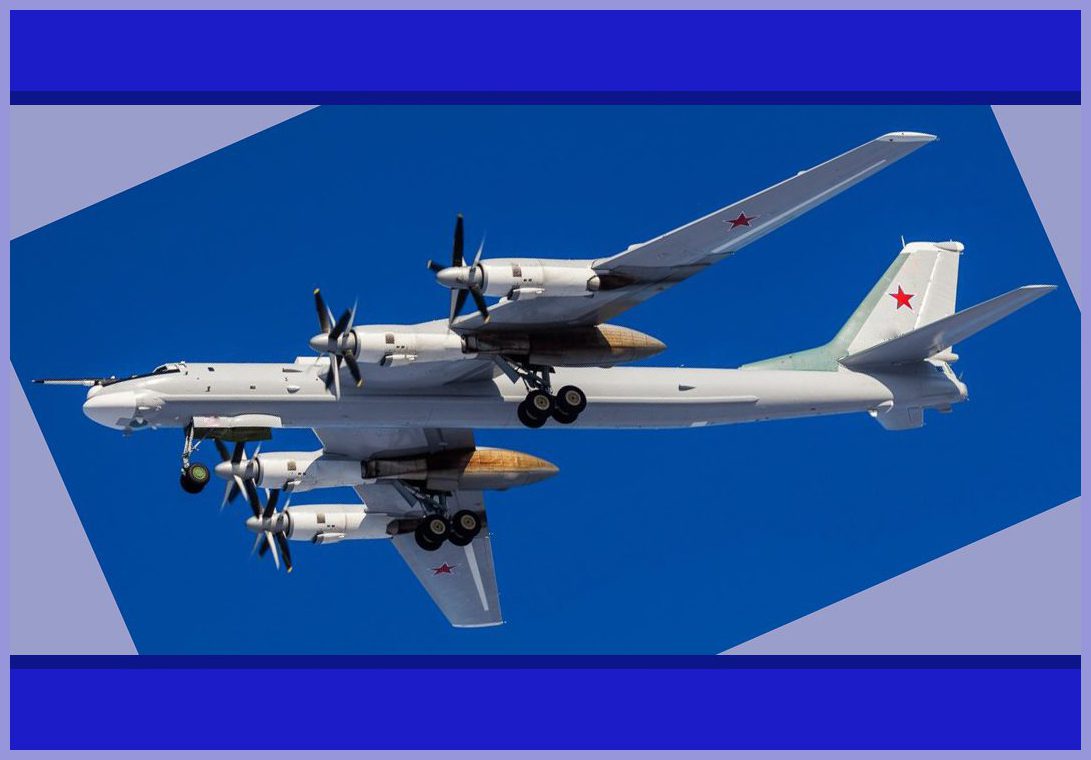The Tupolev Tu-95, with its distinctive swept-wing, four-engine, and unique eight-bladed noisy propeller configuration, stands as a testament to Russia’s engineering prowess during the post-war era. Details Of The Tupolev Tu-95 An Iconic Russian Bomber Whose NATO Codename “Bear” Was Probably The Most Successful Post-War Soviet Bomber Design. In An Age Of Jet-Powered Bombers, The Turboprop-Powered Tu-95 Had A Remarkable Range Capability And Flew At Speeds Not Far Behind Those Of Its “Enemy” Counterparts.
Get ready for an enthralling journey as we explore the captivating history of the Tupolev Tu-95, a truly iconic gem of Russian aviation! This legendary bomber possesses a fascinating lineage, as its fuselage profile draws inspiration from the Tu-4 bomber – a slight replica of the American B-29 Superfortress. With its imposing silhouette, it instils fear in those who recognize it as a symbol of Cold War tensions. Frequently caught in the camera lens, it daringly ventures into UK airspace, eliciting pursuit from RAF fighter escorts. Brace yourself for an adrenaline-pumping encounter with the riveting intricacies of this awe-inspiring aircraft, encompassing its construction, advancements, missions, and comprehensive technical specifications.
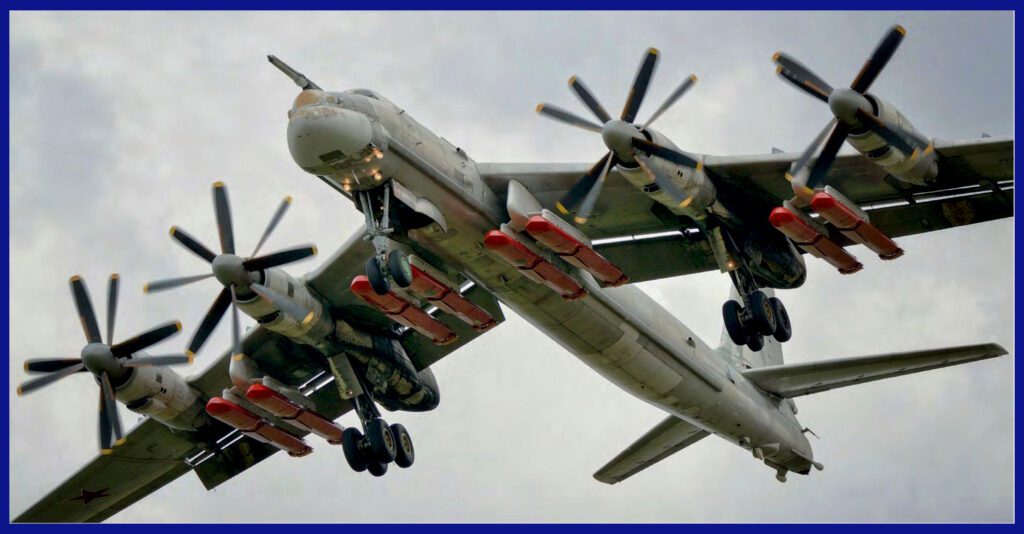
Construction Of The Tu-95 Bomber
The development of the Tu-95 commenced during the early 1950s as the Soviet Union sought to enhance the range and destructive capabilities of its bomber fleet. KB Tupolev presented a design featuring four turboprop engines, offering an impressive range of over 13,000 km / 8,073 miles and a speed surpassing 800 kph / 497 mph at altitudes of 10,000 m / 32,810 ft. Notably, the aircraft’s 35-degree swept wings, a unique feature in a propeller-driven aircraft, were informed by the experience gained from developing the swept wing for the Tu-16 jet bomber.
As with many aircraft, the success of the design hinged totally on an effective powerplant. The design of the Tu-95 is called the turboprop with a power output of around 10,000hp, while the most powerful Russian turboprop available at the time only generated 4,800hp. Engine designer Kuznetsov had the job of getting the prototype Bear in the air, and their stop-gap solution while the awesome NK-12 was developed was to use the eight engines arranged in pairs, producing 12,000hp in a tractor and pusher configuration. The eight TV-2 engines, effectively pulling and pushing the aircraft simultaneously, were powerful enough to get 95/1, the Tu-95 prototype, into the air for the first time on November 12, 1952.
The second prototype, 95/2, equipped with four of the hugely powerful TV-12 engines ( the most powerful production turboprops ever ) was completed in June 1954 and first flew on February 16, 1955. The engines drove contra-rotating propellers, which were used for maximum fuel economy and range.
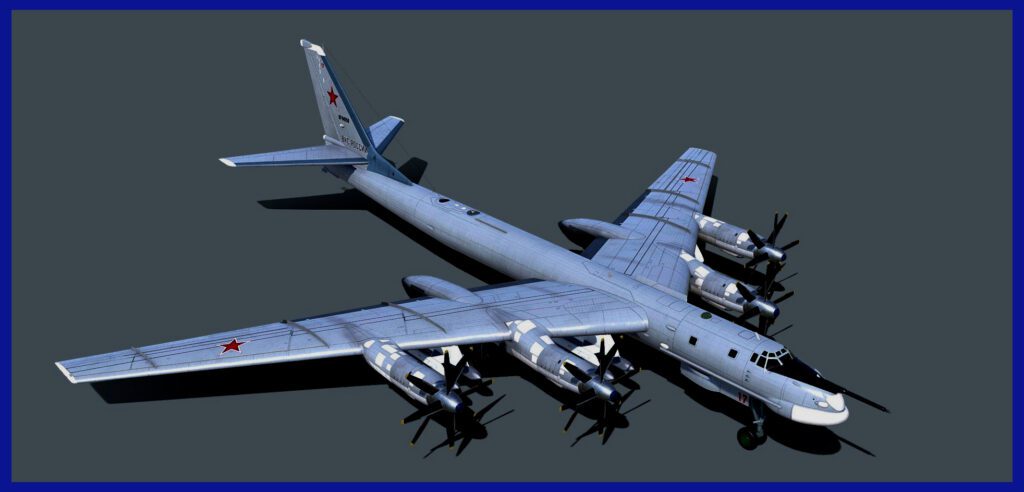
The Production Phase
Production of the aircraft, now formally designated Tu-95, started in January 1956, with the Tu-95M ( known to NATO as the Bear A ), a high-altitude, free-fall nuclear bomber capable of carrying 9000kg / 19,809 lb bombs in its 14.2m / 46ft 7in bomb bay over the aircraft maximum design range. The Tu-95M carried six radar-controlled, turret-mounted AM-23 guns for self-defence. Powered by more fuel-efficient NK-12M engines, deliveries to service units began in October 1957. This was very bad news for NATO because it meant that the Soviet Union now had intercontinental capability.
Most “Bear As” were later converted to AS-3 missile-carrying “Bear-B” standard, while around a dozen A-models were converted to Tu-95U configuration for training purposes.
Further versions of the aircraft included the Tu-95K2 “Bear-G” which carried two Kh-22 “Kitchen” missiles, one beneath each wing. With a range of up to 460km/286 miles, these 350-kiloton missiles, along with the AS-3 gave the Tu-95 a stand-off capability and improved the aircraft and crew’s survivability. The final bomber version of the long-serving but formidable aircraft was the Tu-95MS ( the “Bear-H” ) which carries six Kh-15 “KENT” cruise missiles in its bomb bay, and remarkably, a further ten on underwing pylons.
Maritime reconnaissance variants also appeared while the Tu-142, a dedicated anti-submarine version, was developed with a longer fuselage and a ventral search radar radome. The Tu-142 carries sonobuoys to detect submarines, as well as torpedos and mines for attack. Ten Tu-142s entered service with India in April 1988 for long-range surface surveillance and anti-submarine warfare missions.
An interesting spin-off from the Tu-95 was the Tu-114 airliner. The Tu-95’s wing and engines were joined to an enormous fuselage that could carry up to 220 passengers. The airliner debuted at the Paris Air Show in 1959 and entered Aeroflot service in 1961. Thirty examples of the airliner were built, and these served until October 1976.
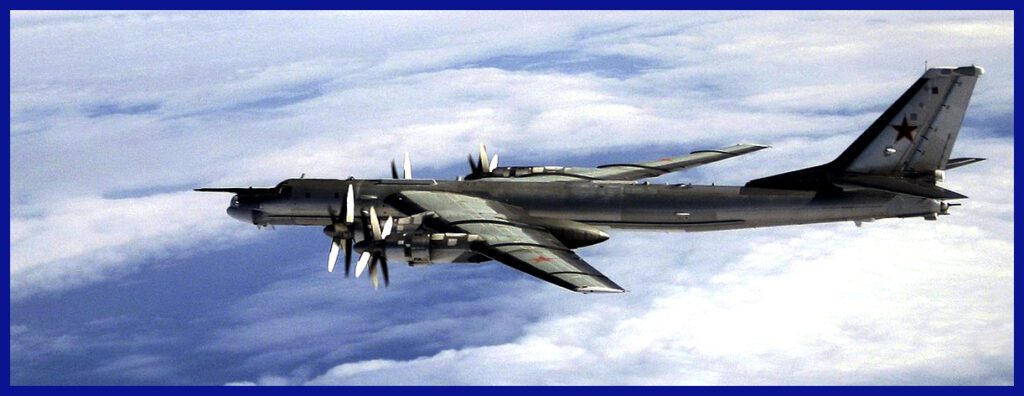
Upgrades To the Tu-95 Bomber
The Russian Air Force began studying options to modernize their Tu-95MS fleet in the 2000s, with compatibility for the Kh-555 missile being added in 2003. A formal modernization program was initiated in 2009 with a research and development contract awarded to Tupolev by the Russian Defense Ministry. This program only applies to aircraft manufactured from 1986 onwards, totalling between 30 and 35 planes. The modernization process is divided into two steps.
The first step involves making the aircraft compatible with Kh-101/102 cruise missiles, which cannot fit in the internal missile bay and require the addition of new external hardpoints. This step also includes replacing various equipment, such as the satellite signal reception system, instrument landing system, and navigation systems. Additionally, this first step enables the plane to carry eight Kh-101/102s on four double missile pylons, in addition to six Kh-55/55SM/555s in the internal rotary missile launcher.
The second step of the Tu-95MS modernisation program is the most extensive and is referred to as the Tu-95MSM variant. It involves significant upgrades to the aircraft’s systems, including the installation of the new Novella NV1.021 passive electronically scanned array radar to replace the Obzor-MS, a new S021 navigation system, and the Meteor-NM2 airborne defence complex.
Furthermore, notable upgrades include the installation of the Kuznetsov NK-12MPM turboprop engines and the adoption of new AV-60T propellers, resulting in an impressive 50% reduction in vibration levels. As part of the modernization process, the tail turret is removed. The inaugural flight of the first Tu-95MSM aircraft took place on 22 August 2020. Subsequently, in August 2021, a fresh contract was inked to upgrade Tu-95MS strategic missile-carrying bombers to the Tu-95MSM level.

Background On The Tu-95 Bomber’s Operations
Although hailing from the Soviet era of the Cold War, the Tu-95 bomber’s recent history and current achievements are equally captivating. In July 2010, two Russian Tu-95MS strategic bombers accomplished a remarkable feat by setting a world record for a non-stop flight in their class. Astoundingly, they remained airborne for over 43 hours, traversing through the Atlantic, Arctic, and Pacific oceans, along with the Sea of Japan, and covering a staggering distance of over 30,000 km (19,000 mi). This extraordinary journey was made possible through four mid-air refuelling operations. The primary aim of this ambitious undertaking was to meticulously assess the aircraft’s performance during such an extended flight, with a particular focus on monitoring the engines and other crucial systems.
On 17 November 2015, the Tu-95 bombers made their historic combat debut during the Russian military intervention in the Syrian Civil War. These bombers were utilized in long-range airstrikes, marking a significant moment in their operational history. Exactly one year later, on 17 November 2016, the upgraded Tu-95MS strategic bombers took centre stage in their first-ever combat deployment. During this mission, they demonstrated their capabilities by launching Kh-101 cruise missiles at multiple militant positions in Syria. These milestones showcase the continued relevance and potency of the Tu-95 in modern warfare scenarios.
On 5 December 2017, history was made when two Tu-95MS strategic bombers, accompanied by two Il-76MD transport aircraft, landed at the Biak Air Base in Indonesia for the first time. The impressive feat involved covering over 7,000 km (4,300 mi) with mid-air refuelling. During their visit, the Tu-95 crews conducted their maiden patrol flights over the southern Pacific, staying airborne for over eight hours. This achievement showcased the aircraft’s capabilities and expanded its operational reach on the global stage.
During the brutal initial assault of the 2022 Russian invasion of Ukraine on February 24th, the mighty Tu-95MS/MSM bombers reportedly played a decisive role. According to Ukrainian sources, on March 6th, these formidable war machines launched a barrage of eight cruise missiles, possibly the Kh-101, at the strategically critical Havryshivka Vinnytsia International Airport from the Black Sea area. Then, on June 26th, the Ukrainian Air Force’s spokesperson, Yurii Ihnat, confirmed that four to six Kh-101 cruise missiles were mercilessly unleashed upon Kyiv by the fearsome Tu-95MS and Tu-160 strategic bombers, which took off from the rugged terrain of Astrakhan, thousands of miles away.

Here Is A Recap Of The Summary Of The Tu-95 Aircraft
- The Tupolev Tu-95 is a strategic bomber designed and produced by the Soviet Union in the 1950s.
- The aircraft first flew in 1952 and entered service with the Soviet Air Force in 1956.
- The Tu-95 is equipped with four Kuznetsov NK-12 turboprop engines, making them the most potent turboprop engines ever manufactured.
- The Tu-95 has a maximum range of approximately 15,000 km ( 9,300 mi ) and a top speed of around 920 km/h ( 570 mph ).
- It has a crew of up to seven members and can carry various types of bombs and missiles, including nuclear weapons.
- The NATO reporting name “Bear” is derived from the Tu-95’s four-engine turboprop configuration, which resembles that of a bear’s paw.
- The Tu-95 has been used in various conflicts and operations, including the Cold War, the Korean War, the Syrian Civil War and the recent Russo-Ukraine war as of 2023
- The aircraft has been in service with the Russian Air Force for over 60 years and remains in active service as of 2023.

The Tupolev Tu-95MS Technical Specifications
- Pilot: Total 7 crew ( Pilot, co-pilot, flight engineer, two communications system operators, navigator, tail gunner )
- Length: 162 ft 5 in ( 49.5 m )
- Wingspan: 167 ft 8 in ( 51.1 m )
- Height: 39ft 9 in ( 12.12 m )
- Empty Weight: 90,000 kg ( 1,98,416 lb )
- Max Takeoff Weight: 1,88,000 kg ( 4,14,469 lb )
- Payload: 15,000 kg ( 33,000 lb )
- Powerplant: 4 × KKBM Kuznetsov NK-12MV turboprop engines 15,000 PS ( 15,000 hp; 11,000 kW )
- Propellers: 8-bladed contra-rotating fully feathering constant-speed propellers
- Max Speed: 920 km/ph ( 570 mph )
- Combat range: 12,800 km ( 7949 mi )
- Ferry range: 15,000 km (9,300 mi )
- Service ceiling: 45,000 ft ( 13,716 m )
- Rate Of Climb: 10 m/s ( 2,000 ft/min )
- Armament: 2 × 23 mm ( 0.9 in) Gryazev-Shipunov GSh-23 autocannon in tail turret, The Tu-95MS is designed to carry a combination of weapons on its wing pylons as well as its internal weapons bay, with a capacity of 15,000 kg ( 33,000 lb ). These weapons include Kh-20, Kh-22, Kh-55, and Kh-101 ete.

The Tu-142, a maritime reconnaissance and anti-submarine warfare aircraft, shares its lineage with the Tu-95 family. Developed for the Soviet Navy during the 1960s, the aircraft is derived from the Tu-95 bomber. To accommodate its specialized role, the Tu-142 features a lengthened fuselage and incorporates new wings, tail surfaces, and other necessary modifications. On March 18, 1968, the first prototype of the Tu-142 successfully completed its inaugural flight, marking a significant milestone in its development and service.
The Tu-142 was designed to operate in conjunction with surface ships and submarines, detecting and tracking enemy vessels using radar, sonar, and other sensors. It could also carry torpedoes, bombs, and missiles for use against submarines or surface targets.
During the 1980s, India sought the assistance of the Soviet Union in acquiring state-of-the-art maritime reconnaissance aircraft. After careful consideration, the Tu-142 was selected for the task and supplied to the Indian Navy from 1988 onwards. The Indian version of the aircraft, known as the Tu-142M, was equipped with cutting-edge Western avionics, weaponry, and other modifications. Despite its retirement in 2017 and replacement with the Boeing P-8I Poseidon aircraft, the Tu-142 remains a vital chapter in India’s military aviation history, with its legacy continuing to inspire future generations of naval aviators.
The Tupolev Tu-142M played a pivotal role in the Indian Navy, serving as maritime surveillance, anti-submarine warfare, and intelligence-gathering aircraft. Its sophisticated sensor suite, comprising radar, sonar, and electronic warfare systems, enabled it to detect and monitor surface and subsurface targets across vast expanses. Notably, the Tu-142M’s key responsibilities encompassed monitoring the movements of Chinese and Pakistani naval forces in the Indian Ocean and tracking the activities of foreign submarines operating in the region.
The Tu-142M had the capability of carrying a variety of weapons, such as torpedoes and depth charges, which were used in anti-submarine warfare operations. It was frequently deployed for patrols and reconnaissance missions in the Indian Ocean and played a vital role in safeguarding India’s maritime interests.
Over the years, the Tu-142M was involved in several high-profile operations, including the search for the missing Malaysian Airlines flight MH370 in 2014. It also participated in several joint naval exercises with other countries, including the United States and Japan.
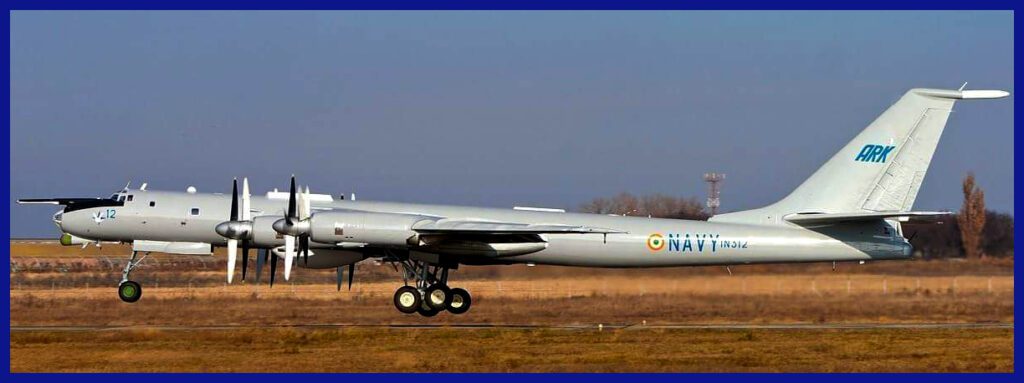
In conclusion, the Tupolev Tu-95 stands out as an iconic and highly versatile aircraft, boasting a legacy that has lasted over six decades. It has served not just as a strategic bomber but also as a reconnaissance and maritime patrol aircraft for both the Russian and Indian Navy, showcasing its adaptability and endurance.
The Tu-95’s remarkable ability to carry a diverse range of weapons, combined with its impressive long-range capabilities, has established it as a significant player in military aviation history. Its unique design and technical specifications have captivated the imagination of aviation enthusiasts worldwide, cementing its place as an aviation legend. The Tu-95 represents the ingenuity and technological advancement of the Soviet Union and continues to inspire future generations of aviation enthusiasts and engineers.
Alongside this article, seize the exclusive opportunity to acquire premium-scale diecast models of legendary Russian fighter jets, including the Sukhoi SU-57 Felon, SU-30SM Russian Knights, Sukhoi SU-34 Fullback, and Mikoyan MiG-29 Fulcrum. Available only at Air Models, these remarkable and iconic long-range military fighters boast impeccable track records and are now purchasable on AirModels with worldwide delivery. Click here now to secure your piece before the limited stock is depleted.

Important Announcement for Our Valued Readers!
After an article is published, it is possible that updates or changes may have occurred beyond the time of publication. Therefore, it is important to be aware that certain information in the article might be outdated. To ensure the most accurate analysis, it is highly recommended to verify the content with the latest sources available.
However, we are dedicated to delivering outstanding articles on military products and global updates. Maintaining quality and smooth operation requires resources. Your support sustains our efforts in providing insightful content. By purchasing high-quality products through our affiliated links, you help us keep our platform alive and acquire top-notch items. Your unwavering support is invaluable and inspires us to strive further.
We welcome your suggestions and requests for more information, as we value feedback from our readers. If there’s specific defence material or equipment not covered on our site, please share your request in the comments. We’ll strive to research and provide the required information. We sincerely thank you for your unwavering interest in our website, and we eagerly anticipate hearing from you! Enjoy your reading experience!
